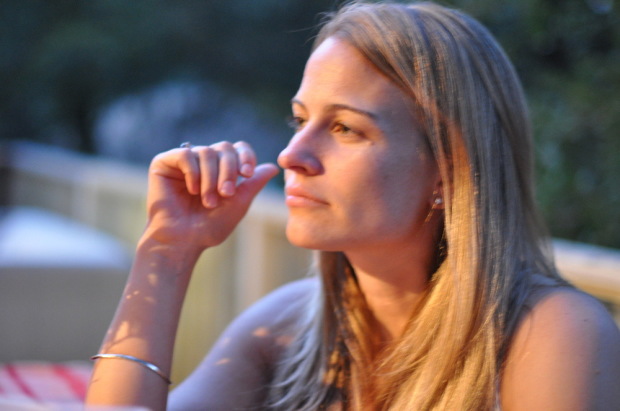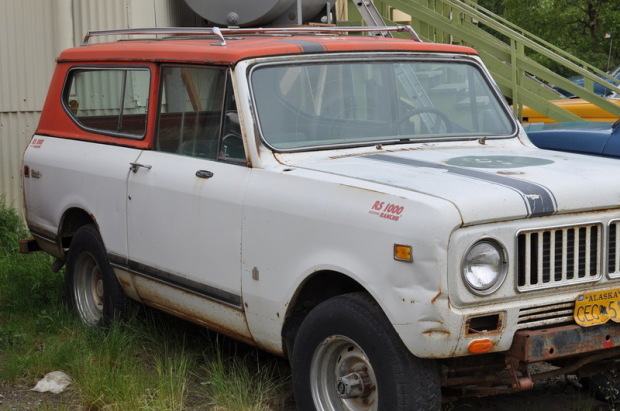Thank you to Eric Asimov for including this write-up on Melissa in the New York Times “Diner’s Journal: What We’re Reading” July 10, 2012.
***
Melissa Sutherland: Wine as Food, The Aesthetics of Entertaining

At the center of a simple act, like entertaining in one’s home, rests an understanding of the incredible power of straightforward choices to shape the pace and balance of an evenings’ chatter, joy, and excitement. In his Third Critique, Kant considers the dynamics of a social dinner. According to his account, each aspect of the meal from how courses are designed, and moved one to the next, to the size of the party, and, most importantly, who is invited, are relevant to generating the Aesthetic balance that makes the dinner a success. What is implicit in Kant’s analysis is the understanding that a successful event, like a dinner well-planned, has the capacity to relax, to enliven, and to help create something new between the people within its influence. What becomes interesting here, is in considering how the choices necessary to such an occasion fundamentally rest in the meal itself, including the types of food and wine served. It is perhaps, first, with whom the evening is shared, that is most important for setting a mood of possibility for an event. But that mood is very closely next found in what food and wine is served.
Raised in Texas with parents that enjoyed having people over, Melissa Sutherland grew up well-versed in the experience of cultivating Aesthetic balance for an evening of entertaining. In their practice, wine operated as an integral feature of any meal, another ingredient in the dinner served. It wasn’t necessary for fine wine to be selected, but wine was understood as elemental to the process of cooking, and sharing food with others.
After leaving a career in politics, working both for Senators and on campaigns, Sutherland chose to return to Houston and enter a career in K-12 teaching. During her tenure in public schools, and having already cultivated a knowledge of both Italian and French wine, Sutherland chose to further develop her understanding of food and wine through purposeful study and note taking. In doing so, she was seeking to deepen her own knowledge, but also to return to her experiences from childhood, now as the adult in charge.
In talking to Sutherland about the insights she gained from both her own practice, and her parents’ in entertaining, she clearly names at least two. First, in Sutherland’s view, wine is far more than a commodity to be traded and sold. It is a food. This is not to say that it is enough to live on (just as any one food is not enough for a balanced diet or sustenance), nor that everyone needs to have it. It is to say that a foundational relationship with wine sees it as just as intrinsic to the Aesthetics of a meal as the food of the meal. Further, in taking this foundational relation with wine, it can be seen as a sort of vehicle through which relaxation, transition, and even elixir can be found. That is, when well timed and placed, wine can lead to things.
Coming from such a view, focusing on a life in wine retail reveals certain limitations to be wrestled with. Most primary of these is the simple fact that wine shops separate the food from the wine, thus structurally treating the two as different in kind. What Sutherland witnesses, however, from working with customers in wine retail, is that most enter with food in mind. That is, the bigger portion of the time, customers select wine based on an idea they have for a meal. In other words, (whether considering philosophy or not) they’re there in shop striving to cultivate the Aesthetic balance Kant considers by picking the perfect bottle of wine for enjoyment alongside the food they have planned.
Melissa Sutherland: Accessibility and Commodity, Wine’s Availability

After several years in public teaching, Melissa moved to New York and in so doing also stepped into a career in wine. Having established a strong base of wine knowledge, and experience in the analogies of marketing through her political career, Melissa was asked to help start the first retail + wine bar in Manhattan, Vino Vino in Tribeca. The several years of experience there led to her being brought into a position in the fine wine retail location Italian Wine Merchants (IWM) as their Creative Director at a time when the establishment was reshaping itself. There she helped redevelop IWM’s brand to reflect the shop’s new direction, and worked directly with fine wines from Italy. After several years with IWM, Melissa decided she wanted to take a new direction to learn more about wine from another angle. The change led to her position with the more volume focused wine shop, 67, serving as a wine buyer for Italian White Wines, and Sherry, as well as their Director of Marketing.
The move from fine wine to volume stands in opposition to a view common in wine, where such a change might be seen as a kind of downgrade in focus. In asking Melissa to discuss her experience in working with 67, it quickly becomes clear that the choice actually advances multiple goals and interests she carries in relation to wine. The easier of the two answers here is simply that Melissa wanted to learn about the realities of selling volume in wine retail. The more involved answer is found in the way that understanding how to sell volume also makes it possible to better increase the accessibility of wine for more people.
In thinking about her own career goals, Melissa plainly states that one of them is to put wine in the hands of more people. In doing so, she describes such a process in relation to the question of accessibility, but it quickly becomes clear that her idea of the term includes multiple prongs. When thinking about how to make wine more available to more people the question of volume becomes essential, but alongside volume rests questions of communication.
Looking first at volume, a simple increase in quantity means there is more product available for more possible people in terms of potential numbers. But greater quantity also works to lower the overall price of a product, thereby making it more affordable to more people. What is truly interesting about the role volume plays in wine accessibility though appears through a kind of tricky planning. By wisely targeting affordable trends in wine sales, Melissa has the capacity to use already established market leaders in wine (like the ever popular, lighter versions of Pinot Grigio, for example) to leverage in lesser known wines she hopes to help more people discover. That is, by selling more popular ‘high volume’ wines, she can use the guaranteed income of those labels to purchase and sell wines that are harder to get, thereby increasing a different sort of accessibility to labels that may be less readily brought into the United States otherwise. In doing so, she is able to expose those fine wines, or more obscure wines to more people.
But genuine accessibility depends upon better communication as well. In wanting to increase more people’s connection to wine, Melissa invests her time in expanding the conversation. In this way communication happens through multiple levels, and via layered differing vehicles. The simplest examples appear just through different ways to make contact with customers. Conversations on the retail floor with people that have walked through the front door of a shop’s brick and mortar location is one way. But today getting people in the door depends not only on the street front shop view, but also on online presence happening through a website, twitter, and other forms of social media.
In addition to considering the vehicles through which conversation occurs, Melissa also considers how communication happens. With the speed of online communication, focusing on something like having a well focused brand becomes essential. As such, she dedicates herself to developing coherent brand presentation as a way to generate quickly recognizable avenues for wine consumers. That is, a wine brand, whether it is a particular wine shop, wine label, or wine personality, serve as a vehicle through which individuals can make contact with a wine (or not). Whether an individual understands and feels comfortable with a particular brand identity determines whether that individual will approach and later return to develop a relationship with that brand. In the case of a wine shop, the brand serves as a way to give customers a sense of what’s available for sale. The brand offers a quick sense of if the shop feels right, or looks like the most reasonable choice for the customer. In the case of a wine label, the brand helps generate a feel for what the wine has to offer–again, if the presentation of the wine will suit the customers’ palate. A brand, then, operates as a kind of fast symbol for what a customer might want.
Ultimately, what is found throughout Melissa’s discussion of wine, including the more technical aspects of juggling smart budgeting of wine sales, or developing coherent wine brands, is a passionate desire to invest in wine as a vehicle both of sharing, and generating possibility–an elixir for a more beautifully lived life.
***
Thank you to Melissa Sutherland for taking so much time to talk with me! I’m so grateful, and thoroughly enjoyed our conversation.
Copyright 2012 all rights reserved. When sharing or forwarding, please attribute to WakawakaWineReviews.com













































































































































































